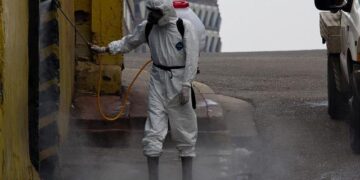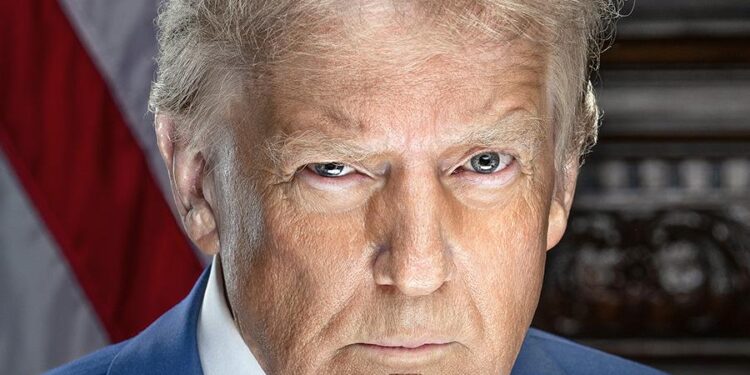In a surprising move that signals shifting geopolitical dynamics in South America, former U.S. President Donald Trump has pledged a $20 billion financial lifeline to Argentina amid the country’s mounting economic crisis. The unprecedented aid package aims to stabilize Argentina’s flailing economy, which has been plagued by soaring inflation, currency devaluation, and mounting debt. This development raises critical questions about the motivations behind Trump’s intervention and its potential impact on both Argentina’s future and broader international relations. PBS examines the details and implications of this significant financial commitment.
Trump’s Strategic Motivations Behind the $20 Billion Aid Package to Argentina
Behind the staggering $20 billion aid package lies a calculated geopolitical play aimed at consolidating influence in South America. By supporting Argentina’s fragile economy, Trump’s administration seeks to create a strategic ally in a region where China and Russia have been increasingly assertive. This financial lifeline is not just about economic relief; it is a deliberate measure to curb the growing sway of rival powers through economic dependency. Additionally, Washington anticipates that stabilizing Argentina will lead to deeper bilateral trade relationships, opening doors for American businesses in sectors such as agriculture, energy, and technology.
- Counterbalance to China: Undermining China’s Belt and Road investments in Latin America.
- Energy Security: Ensuring Argentina’s lithium and renewable resources benefit U.S. interests.
- Political Influence: Cultivating a favorable government ahead of future regional summits.
Economists warn, however, that without structural reforms accompanying this aid, Argentina could slip back into dependency. The White House remains confident that the package will enable crucial economic adjustments-such as controlling inflation and reducing sovereign debt-that align with broader American objectives. Ultimately, this aid is not charity but a strategic investment intended to weave Argentina more tightly into a U.S.-led economic and political orbit in the coming decades.
| Motivation | Intended Outcome | Timeframe |
|---|---|---|
| Economic Stabilization | Reduce inflation, encourage investment | 1-2 years |
| Geopolitical Leverage | Weaken China’s foothold | 3-5 years |
| Trade Expansion | Boost U.S. exports and technology access | 5+ years |
Economic Challenges Driving Argentina’s Request for US Support
Argentina is grappling with a complex web of economic challenges that have severely undermined its financial stability, prompting the recent appeal for a substantial aid package from the United States. Persistent inflation rates soaring above 100%, a rapidly depleting foreign currency reserve, and mounting national debt have created an unsustainable economic environment. Businesses face increasing operational costs, while ordinary citizens struggle with skyrocketing prices on basic goods and services, pushing many into deeper poverty. The government’s attempts to stabilize the economy through austerity measures and currency controls have often backfired, leaving little room for maneuver without external assistance.
Several critical factors underpin Argentina’s precarious situation:
- Chronic inflation: Escalating costs erode purchasing power and discourage investment.
- Currency instability: Frequent devaluations have triggered capital flight and undermined confidence.
- Heavy public debt: Debt servicing consumes a significant portion of government revenue.
- Trade imbalances: Dependence on commodity exports makes the economy vulnerable to global market shifts.
| Economic Indicator | 2023 Value | Impact |
|---|---|---|
| Inflation Rate | 105% | Loss of consumer confidence |
| Foreign Reserves | $40 billion | Limited import capacity |
| Unemployment | 12% | Rising social unrest |
| Public Debt | 90% of GDP | High debt servicing costs |
Potential Impact and Recommendations for Ensuring Sustainable Recovery in Argentina
Argentina’s economic landscape stands at a critical crossroads, and the injection of $20 billion offers a pivotal opportunity to stabilize its flailing economy. However, the true measure of success lies in crafting policies that not only address immediate fiscal challenges but also lay a foundation for long-term growth and resilience. Central to this effort will be fostering fiscal discipline, enhancing transparency, and encouraging foreign investment, while simultaneously protecting vulnerable populations from the brunt of austerity measures. Without a balanced approach, the risk of deepening social inequality and renewed economic volatility remains high.
To maximize the impact of international aid and ensure sustainable recovery, Argentina must prioritize structural reforms that promote innovation and productivity. Key areas for intervention include:
- Modernizing the agricultural sector: Leveraging technology to boost exports and rural incomes.
- Improving governance: Strengthening institutions to fight corruption and build investor confidence.
- Expanding access to education and healthcare: Supporting human capital development as a cornerstone for economic stability.
- Implementing sound monetary policy: Controlling inflation to preserve purchasing power and stabilize markets.
| Key Recovery Focus | Expected Outcome |
|---|---|
| Fiscal Responsibility | Reduced budget deficits & improved credit ratings |
| Foreign Investment Attraction | Boost in capital inflows and job creation |
| Social Safety Nets | Mitigated poverty & social unrest |
| Monetary Stability | Lower inflation & stronger currency |
Future Outlook
As Argentina grapples with soaring inflation and mounting debt, the decision by former U.S. President Donald Trump to extend a $20 billion lifeline marks a significant development in the South American nation’s economic recovery efforts. While the move underscores the complex interplay of international finance and geopolitics, its long-term impact remains to be seen. Analysts will be closely monitoring how this infusion of funds influences Argentina’s stability and whether it sets a precedent for future economic partnerships amid global uncertainty.































